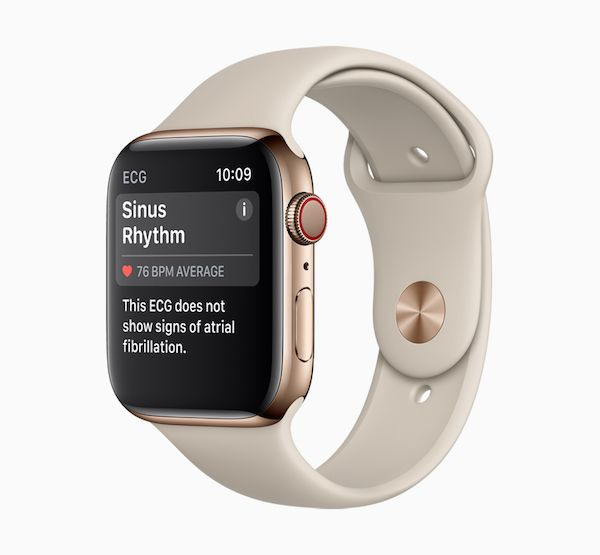Apple Watch Series 4 ECG Feature Can’t Detect These Conditions

Apple has already enabled the ECG feature on the Apple Watch Series 4, and it is currently making headlines for efficiently recognizing atrial fibrillation (AFib) or irregular heart rhythm. Sadly, the heart-centric tool has its limitations as it is incapable of detecting many other conditions affecting the vital organ.
Once users have installed watchOS 5.1.2 on their Apple Watch Series 4 and iOS 12.1.1 on their iPhone, they will be greeted by a screen that introduces the latest addition to the Health app, which is the ECG feature. During the initial setup, a concise explanation on what the test does is provided. Alongside this is the list of conditions and cases that are beyond the scope of the ECG feature.

First and foremost, the ECG feature does not detect a heart attack. Apple advises users to call for professional help if they are experiencing chest pain, pressure, tightness and other symptoms of the condition.
The Apple Watch Series 4’s ECG also does not detect blood clots or a stroke. Again, what the feature really does is spot irregular heart rhythms like a rapid or skipped heartbeat. It does not have the capacity to identify what’s possibly causing these.
Lastly, the new ECG feature does not detect other heart-related conditions like high blood pressure, congestive heart failure, high cholesterol, and other forms of arrhythmias. That’s why Apple strongly suggests users to consult with their doctor in case the app notices any issue with their heartbeat.

Ever since the ECG feature was enabled earlier these week, many users have been sharing their positive feedback on its big potential to be a lifesaver. One person took to Reddit to point out how the feature was able to notify him about an abnormal heart rate, which eventually led to an AFib diagnosis.
As per the user, he received abnormal heart rate notifications the moment he updated his Apple Watch Series 4 to the latest firmware and tried out the new feature. He initially thought that it was glitchy, since the app kept on giving him the same result. When his wife tried it though, the watch presented the latter with normal findings.
When the user headed to see a doctor, the latter told him, “… This probably saved you. I read about this last night and though we would see an upswing this week. I didn’t expect it first thing this morning.”
In his updates, the user disclosed that he went to see a cardiologist who confirmed the AFib diagnosis after performing a short exam. He was then scheduled to go back in a week for more intensive tests. His story has since received a lot of responses from users who are also thankful for the newly released feature and similar apps.

Apple has been working on making its Apple Watch a health-focused platform. The release of the ECG feature is another step toward reaching that goal and another step in empowering consumers with more health-conscious data.
“We are confident in the ability of these features to help users have more informed conversations with their physicians,” Apple’s vice president of Health, Sumbul Desai, MD, said in a press release. “With the ECG app and irregular rhythm notification feature, customers can now better understand aspects of their heart health in a more meaningful way.”
© Copyright IBTimes 2025. All rights reserved.





















